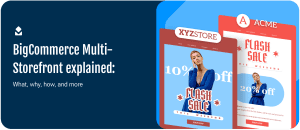Every customer has questions about your business, but unfortunately, some have 20. Those customers take up time and can limit your ability to help others with just a specific question or two about a purchase. Dealing with long conversations that involve the most basic aspects of your business can be frustrating for both you and the customer.
The good news is that you can address most of their concerns without having to spend time with them individually. It all comes back to your customer knowledge, website content, and a bit of work to answer things before they’re asked out loud.
It’s an important process, and we’ll show you how to get started.
Collect User and Business Data
Part of answering customer questions involves learning about what they could ask. The best place to start is to gather some information on your users and your store’s orders. Aggregate everything that you have, from profiles and information about your average user to average order costs, shipping times and distances, and anything else you can.
This information will be useful for both creating questions and finding the answers to what people will ask.
If you identify trends or common concerns — such as your medium-size shirts are often returned and exchanged for a large — you can identify areas to address. In this case, it might be a sizing chart or adding a note that many people order a size up.
Test Your Entire Process
Another proactive step to answering customer questions involves moving through your entire sales process to find bottlenecks, areas of confusion, and find spots where you’re not providing enough information.
It’s okay if you run through the process yourself, but you’ll want people unfamiliar with your brand to do so too. New customers may identify areas where you know the answer to a question because it’s your business, but the site isn’t demonstrating.
In these tests, start with ads or social marketing, move through multiple product pages, add different items to a shopping cart, and make a purchase. You can go a step further and have the paid testers return the goods at the end to also test out your returns process.
Have them write down concerns and questions as they go. This will give you a good list of items and concerns to address on your site.
Create a Comprehensive FAQ
Now, we’ll get to the first part of answering the title’s premise: answering questions without taking up all your time or driving your sales and service teams insane.
First up is collecting all of the questions and concerns you identify in both the business data and your sales process reviews. Get as much together as you can and work hard to find out the answers to the question.
Go overboard here. Your best defense against complaints or a flood of lengthy customer service requests is to an extensive list of questions that you can point users to at any moment.
Having a lot of detail on your FAQ page gives you two advantages:
- You might answer all the questions the customer had so they don’t need to ask your team.
- You are creating a document that your sales or service team can use to answer customer questions. It ensures that answers are consistent for usual questions.
Building the FAQ also gives your designer something to work with when updating product pages. This might mean including the average ship time, a size chart, or listing out who is your order fulfilment partner so they can know who to expect to get a package from.
Provide Easy Customer Service Access
After you’ve built out your FAQ and plastered different sections on relevant site pages, go through your website to make sure it’s easy to contact you when there’s a problem. The simpler this is, the less you’ll be adding to the frustration of someone before they can reach you.
The FAQ and common-answers materials will help your support team close chats, answer emails, or have pleasant phone calls. Then, longer interactions will depend on deeper questions or something specific to an order. This concern could include when a product will arrive, asking for a replacement if something is incorrect or broken, or asking about a special order.
When you are focused on solving a specific problem for the customer — and not answering for the 20th time that day that your shipping takes 5-7 business days — it’s easier to show that you care. You’re solving a problem to maintain a relationship and boost sales, not just serving as a human FAQ page.
Make Your Case Outside of Direct Questions
While we’ve touched on some of the basics about identifying and answering frequent questions ahead of time, there are also other underlying questions you want to address. These are questions your customers don’t ask directly, but they’re thinking about in one way or another.
Some of the more common indirect questions are:
- Why should I trust you?
- Do you deserve my business?
- Is this purchase worth it?
- Can you help me?
- What do I do next?
The Company Questions
The first two questions are about your business. Customers want to know if you’re worth it, and that often means A) is your site safe, and B) do other people like your stuff. You can answer these concerns by showing your trust badges — those icons that denote awards, security requirements, or that you’re verified to accept credit cards and PayPal — as well as reviews from other users.
Don’t just say that you’re trusted and safe. Show it via independent sources.
The Product-Motivation Question
Question three involves justifying your price and value, which is often best accomplished by showing how you’re solving a problem. Most people aren’t buying a graphic t-shirt because society demands they cover up; they want to look cool.
So, show people looking cool in your shirt. Demonstrate that your product solves the underlying concern they have, and you typically also answer customer concerns about value and pricing.
The Final Help Questions
User frustration isn’t always expressed outwardly in a way your sales team receives. Sometimes, it comes as abandoned shopping carts or people closing the tab and heading back to their daily dose of memes.
You want to answer the help and “what now?” questions through the layout of the store. This means providing contextual hyperlinks to things like your FAQ page as well as making sure your call-to-action buttons (like adding to a cart or checking out now) are clear and easy.
Most people will assume that your links are below a product image and that the buttons are at the top right of the page. Stick to this layout, or something similar, to avoid confusion.
Staying Sane
The crux of your Q&A efforts is to provide customers with answers as soon as possible, often before they ask directly or before they need to contact you via chat or phone. It takes time and work to understand what your customers want to see and know. However, successfully answering these elements is a top way to build trust and establish interest, giving you your best chance to close the sale.
About the Author
Jake Rheude is the Director of Marketing for Red Stag Fulfillment, an ecommerce fulfillment warehouse that was born out of ecommerce. He has years of experience in ecommerce and business development. In his free time, Jake enjoys reading about business and sharing his own experience with others.










